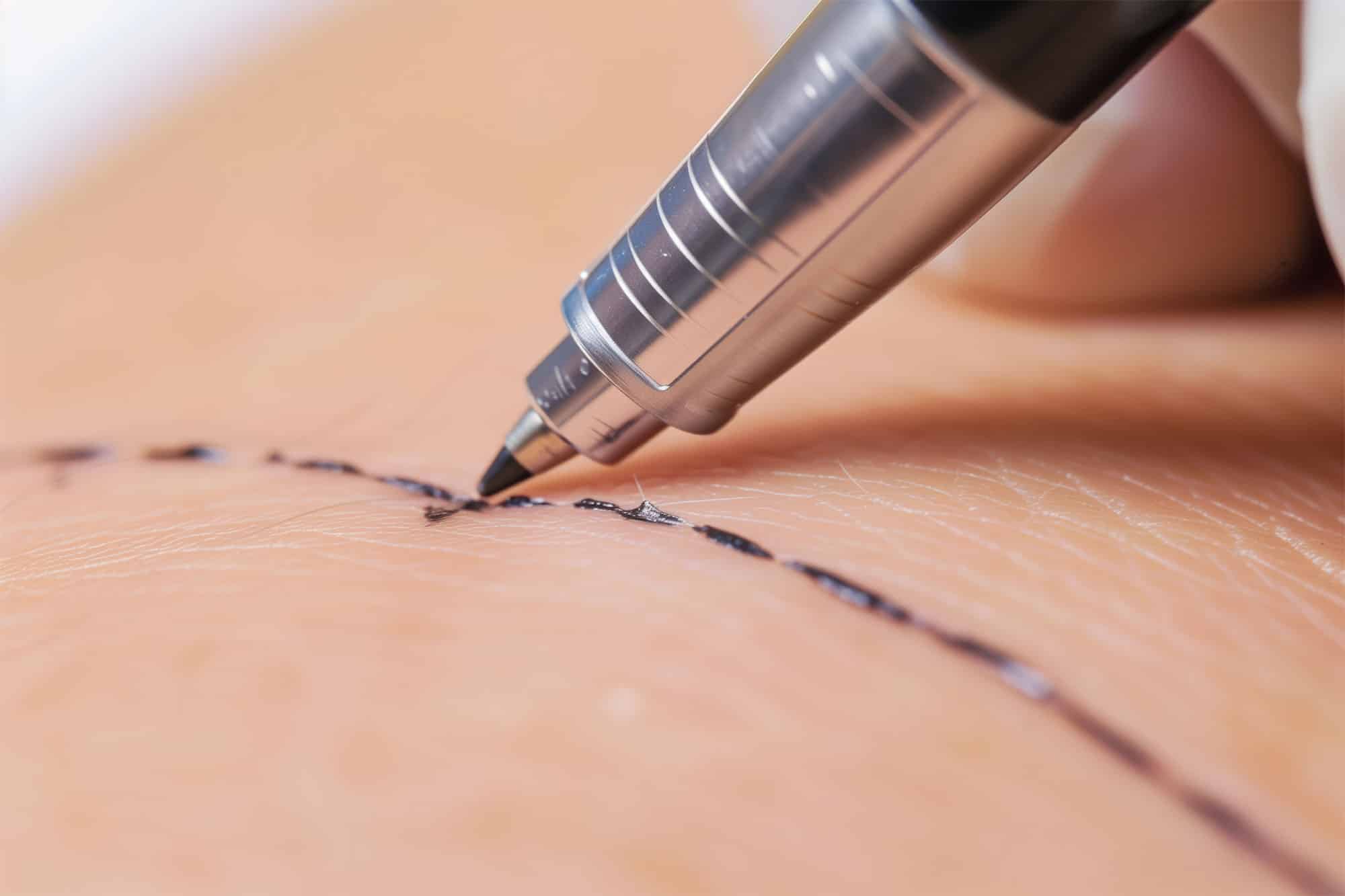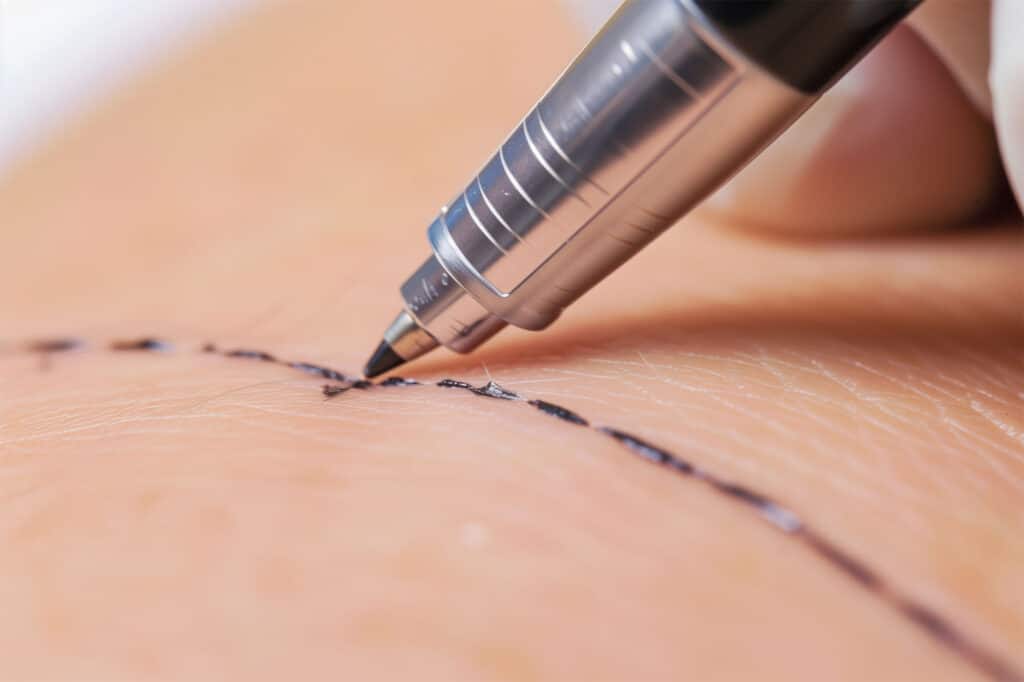Surgical excision is the removal of benign skin lesions that are bothersome, cosmetically undesirable, or located in high-friction areas. This minor, in-office procedure is performed under local anesthetic and provides a definitive removal option when other treatments (like cryotherapy or topical treatments) may not be suitable.
What Surgical Excision Can Treat
Surgical excision may be recommended for:
- Moles/Naevi
- Seborrheic keratoses
- Skin tags
- Epidermoid (sebaceous) cysts
- Lipomas
- Dermatofibromas
- Other benign growths confirmed by clinical evaluation
Treatment & Technique
The procedure involves numbing the area with a small injection of local anesthetic. The lesion is then carefully removed using a scalpel. In most cases, the wound is closed with dissolvable or removable sutures, and a dressing is applied. The entire process typically takes 15–30 minutes, depending on the size and location of the lesion.
Common Treated Areas
- Face and scalp
- Neck and chest
- Back and shoulders
- Arms and legs
- Eyelids and folds (in select cases)
What to Know Before Your Treatment
- Avoid taking blood-thinning medications (e.g., aspirin, ibuprofen) unless prescribed
- Inform your provider if you have a history of bleeding disorders, poor wound healing, or are prone to keloids
- Clean the area thoroughly and avoid using lotions, makeup, or sunscreen on the day of your procedure
What to Expect
Before Treatment
- Medical history and skin exam to determine if surgical excision is appropriate
- Informed consent and review of aftercare
During Treatment
- The treatment area is cleaned and numbed
- The lesion is surgically removed using precise technique
- Sutures may be placed depending on the size and depth of the wound
- A sterile dressing is applied
After Treatment
- Mild redness, swelling, or bruising may occur
- Keep the area clean and dry for 24–48 hours
- Follow specific aftercare instructions regarding wound care, dressing changes, and suture removal (if applicable)
- Healing usually takes 7–14 days, depending on the area treated
Results & Recovery
- Excision offers complete removal of the lesion with the option of biopsy confirmation
- Most clients return to normal activities the same or next day, avoiding heavy lifting or stretching the area
- Scarring is minimal in most cases, especially with good aftercare
- Follow-up may be needed for suture removal or wound review
How Long Will Results Last?
Surgically removed lesions typically do not return. However, if new lesions appear elsewhere, they can also be assessed and treated accordingly.
Is Surgical Excision Right for You?
Surgical excision is ideal for healthy adults with bothersome, benign lesions or for cases where other removal methods are not appropriate. It is especially suited to:
- Lesions in areas prone to friction or irritation
- Clients seeking complete and permanent removal
Not Suitable If You
- Are pregnant or breastfeeding
- Have active infection at the site
- Have a bleeding disorder not under control
- Are unable to comply with post-procedure care
Pricing & Booking
Pricing is based on lesion type, size, location, and whether suturing is required.
A referral from your primary care provider is required for surgical excision. Once a referral is received, a consultation and skin assessment will determine if this is the appropriate option for your condition.


